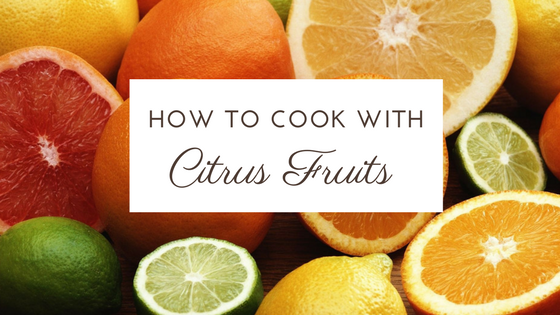Ah, citrus fruits. When the weather gets cold and ugly after the holidays, you’re the one thing that can really perk up a drab day. But citrus isn’t just great to eat (even though it does make a great midday snack or taste great as a breakfast side), it’s also fantastic to cook with. Citrus fruits are actually one of those things you should ALWAYS have in your fridge or pantry.
Now, there are a pretty large variety of citrus fruits, but two types should never ever leave your kitchen and that’s: limes and lemons. They’re so versatile and they compliment almost everything. Not having these two fruits in your kitchen is akin to trying to write without a pen. Aside from that, there are a ton of different types of citrus fruits that you can experiment with, including:
- Oranges
- Bitter orange
- Blood orange (which has become very popular recently)
- Citron
- Clementine
- Grapefruit
- Key limes
- Kumquats
- Mandarins
- Pomelo
- Satsuma
- Sweet limetta
- Tangelo
- Tangerine
- Yuzu
Citrus Juice for Flavor and Acidity
One of the most commonly known ways of cooking with citrus fruits is to squeeze a little citrus juice into whatever you’re making. Oftentimes, this is used as part of a sauce, to give it a little kick. It can also be added to yogurts or other types of creamy sauces and dishes (just remember to keep citrus juice to a minimum in dairy mixtures, as too much will cause dairy products to curdle).
You can also use a squeeze of citrus juice to add a little zing of flavor to vegetables when you’re sauteeing them or to meat as you’re cooking it. Also keep in mind that a little spritz of juice goes a long way – especially if you’re using lemon juice or lime juice, which can be quite sour and tart. So don’t overdo it.
Zest for Subtle Flavors
You’ve probably heard of a recipe asking for lemon zest or orange zest, and if you had no idea what that was, you’re not alone. Zesting is the process of finely grating off the exterior of a citrus fruit – before you reach the white interior side. The outer layer of the fruit offers a lot of flavor potential, and you can think of lemon zest as being a sort of powdered form of lemon flavor (and that’s sort of what it looks like when you zest it yourself). You can actually buy lemon zest at the store, but why bother when lemons are fairly cheap and it’s so easy to do it yourself. Plus, it’s fresh.
To start, use a grater with a fine setting, so that the individual pieces of lemon peel are very very small. You can zest directly into a dish, into a pan, or in a bowl before you use it in a dish. Citrus fruit zest offers a stronger flavor and works incredibly well as a way to top dishes – especially soups, pies, and even pastas.
Citrus Fruits in Sauces
Citrus fruits work enormously well to help flavor sauces. In fact, one of the best ways to use citrus fruits in a sauce is in a citrusy vinaigrette dressing (you can find a basic recipe that you can modify here). It also works incredibly well in marinades and in pan sauces – but a word of wisdom: don’t add in the citrus too early. Let your sauce sauce cook down before adding a spritz of lemon near the end.
Infusing Citrus Fruits Flavor
Finally, cooking with citrus fruits wouldn’t be complete without talking about how to use the entire citrus fruit in your dishes. Large dishes, like entire chickens and turkeys, can be easily roasted with full citrus fruits stuffed inside or throw into the baking dish to add an infusion of citrus flavor. Or, you can throw a couple of halves of citrus fruit on a grill to make a quick snack or side dish. Grapefruits work perfectly for this.
Do you have any tips or ideas on how to cook with citrus fruits? Share them with us in the comments!





